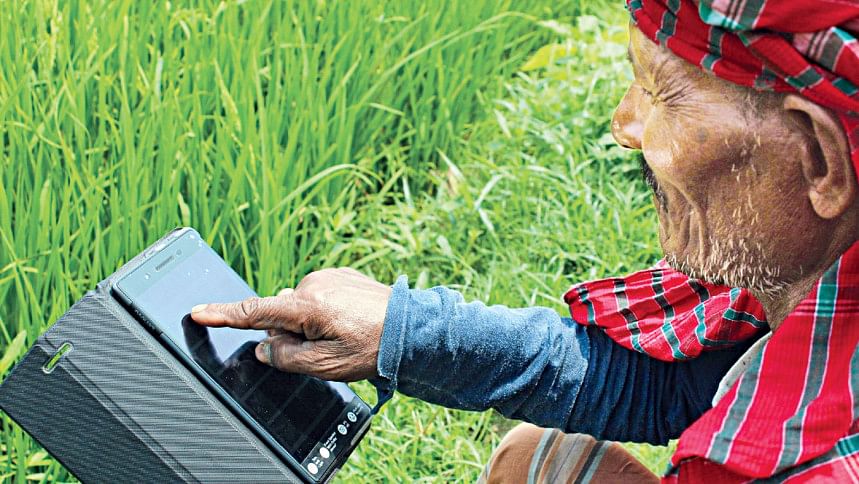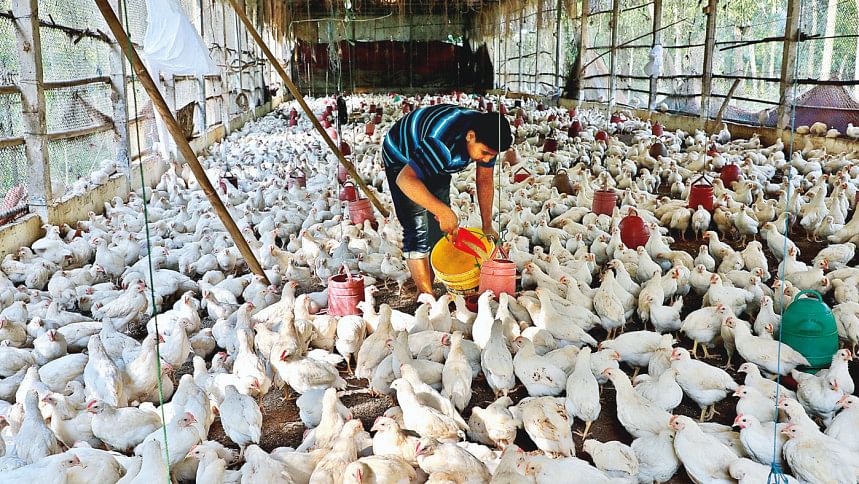Connecting farmers to finance

In the pursuit of agricultural sector development, it's imperative to enhance the accessibility of loans for marginal farmers. However, due to certain shortcomings within our financial system, many marginal farmers struggle to secure loans from formal institutions like banks. This difficulty stems from issues such as remoteness, lack of collateral, and low literacy rate prevalent among farmers residing in rural areas. They often avoid banks due to the burdensome paperwork and strict account opening requirements.
"The low literacy rate amongst farmers makes them reluctant to reach out to banks for loans," shares Ziaul Karim, Head of Communications at Eastern Bank.
On the contrary, NGOs and Microfinance Institutions (MFIs) have greater reach in rural and remote areas and offer a streamlined loan application process. As a result, a significant portion of farmers, approximately 63.28%, obtain loans from these entities.
Banks offer loans at significantly lower rates compared to other institutions. Therefore, Bangladesh Bank has instructed banks to disburse 50% of their agricultural loans through their own network instead of relying on NGOs or other channels.
"Farmers often turn to NGOs and MFIs operating at the union level for easier access. Traveling to banks from rural areas is both time-consuming and costly for them. One of our main focuses is to go to those rural areas. We have our people at the union level looking to provide loans to those marginal farmers. A total of 7 million farmers have obtained loans from us, with 90% of them being women. We have nearly 3000 branches," mentioned Habibur Rahman from ASA, a non-profit organization.
However, banks offer loans at significantly lower rates compared to other institutions. Therefore, Bangladesh Bank has instructed banks to disburse 50% of their agricultural loans through their own network instead of relying on NGOs or other channels.
"Increasing the loan amount by 50 percent is a positive move. It will boost food production and supply. However, it's crucial to ensure that loans reach small, and genuine farmers promptly. They're numerous and vital for production, yet often struggle to access credit", opines Dr. Golam Rabbani, a professor at Bangladesh Agriculture University.
"With an enhanced banking network, farmers can be reached at their doorstep by the banks as they provide loans to farmers at a lower rate than MFIs. One such approach by our bank is agent banking through which we are trying to reach more farmers directly," says Md. Shaminoor Rahman, Senior Executive Vice President and Head of SMR at Bank Asia.
Implementing digitization can streamline the entire process of reaching farmers and tracking loan distribution, ensuring significant development for agri loans.
"We are focusing on leveraging our agent banking network to reach farmers in the most remote areas, pushing forward the adoption of digital or phone applications, and partnering with tech-based agri-companies to facilitate the loan application process for farmers," shares Nazeem A. Choudhury, Deputy Managing Director of Consumer Banking at Prime Bank.
"We are addressing the limitations of our physical channels by implementing an embedded financing program in collaboration with various Agri Fintech companies. This initiative involves identifying Agri Clusters focusing on crops such as Onions, Maize, Turmeric, Banana, watermelon, livestock, and others in regions including Pabna, Natore, Lalmonirhat, Rajshahi, Naogaon, and more," informs Syed Mahbubur Rahman, Managing Director and CEO at Mutual Trust Bank (MTB).

Utilizing technology can significantly ease access to agri loans for farmers. "Implementing digitization can streamline the entire process of reaching farmers and tracking loan distribution, ensuring significant development for agri loans," mentions Kamrul Mehedi, Head of SME at City Bank.
In Bangladesh, 90% of all farmers are marginal, grassroots-level farmers. A study titled "Digital Insights on Agriculture in Bangladesh" (2022) showed that only 48% of smallholder farmers, have smartphones, indicating a clear digital divide
While acknowledging the decrease in the digital divide over time, Kamrul Mehedi believes that introducing more technology would benefit loan disbursement among farmers. "Our upcoming end-to-end project will feature a scoring engine that will determine who will receive what amount of loan and for what farming purpose," adds Kamrul Mehedi.
Ziaul Karim proposes, "Conducting workshops and meetings in villages and rural areas to explain the loan application processes can reach the maximum number of farmers. One-on-one interactions with farmers and their families can restore their faith in banks and build goodwill."
He also recommends organizing fairs and colorful events as part of special campaigns to make the approach more engaging and the loan application process more attractive.

 For all latest news, follow The Daily Star's Google News channel.
For all latest news, follow The Daily Star's Google News channel. 







Comments